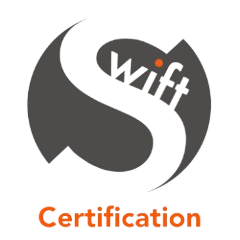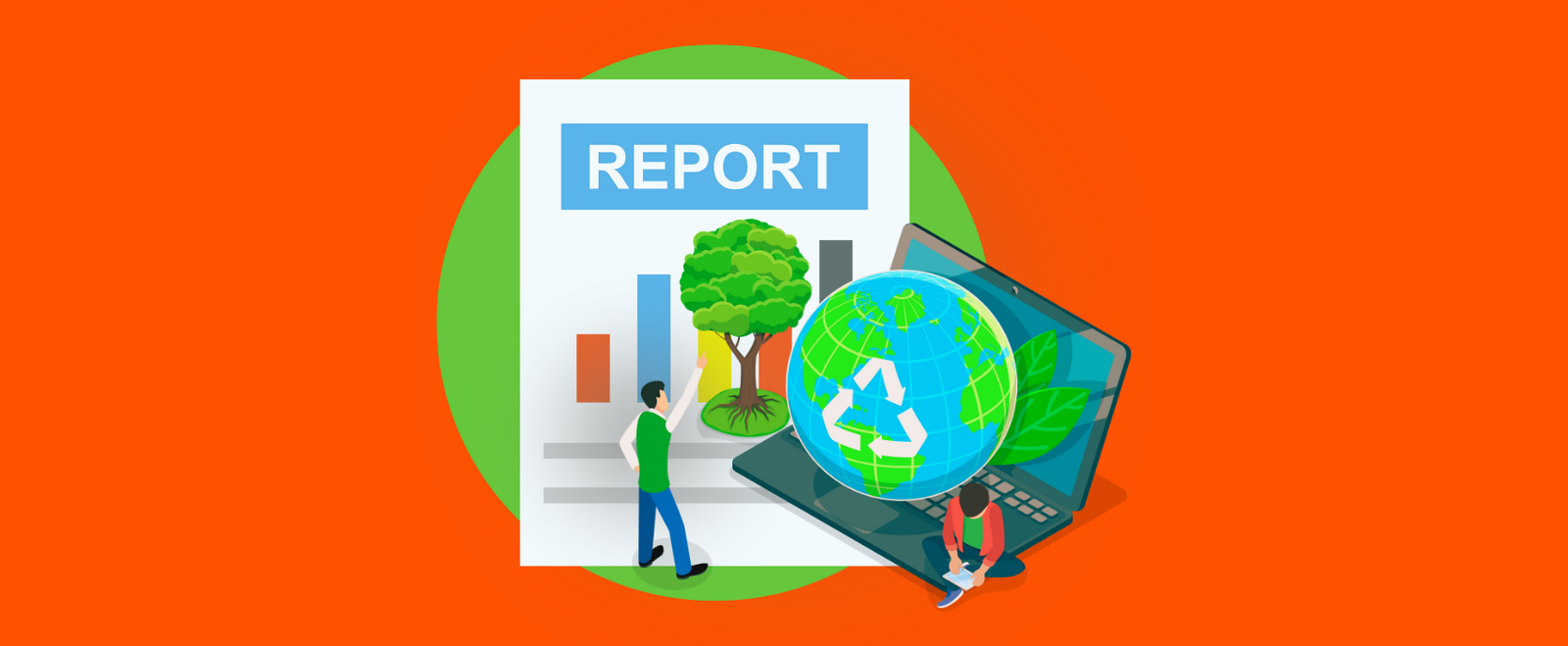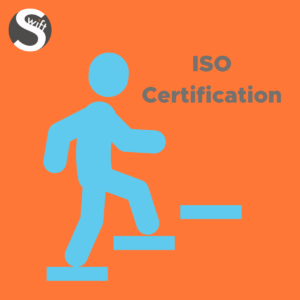The ESG Challenge That Keeps SME Owners Awake at Night
Imagine receiving an email from a prospective client requesting your ESG report. Or an investor asking about your environmental metrics. Or a supply chain partner demanding proof of your sustainability credentials. If you’re an SME owner, you’ve probably experienced that sinking feeling – the realisation that ESG reporting feels like yet another burden, designed by corporations for corporations, leaving smaller businesses behind.
Here’s the uncomfortable truth: ESG frameworks like the Corporate Sustainability Reporting Directive (CSRD) and European Sustainability Reporting Standards (ESRS) were largely built with multinational organisations in mind. They demand hundreds of indicators, sophisticated tracking systems, dedicated sustainability teams, and budgets most SMEs simply don’t possess. The administrative burden feels insurmountable. The technical requirements seem impenetrable. And the cost of compliance threatens your bottom line.
But there’s a better way. In fact, many SMEs already have it sitting on their shelf – they just don’t realise it.
The Bridge: Why ISO 14001 Is Your Secret ESG Weapon
Enter ISO 14001. If you’re already certified to this environmental management standard, congratulations: you’ve already built much of the infrastructure required for credible ESG reporting. If you’re not yet certified, obtaining it might be the smartest ESG investment you make.
Here’s why this matters: ISO 14001 isn’t just about compliance. It’s a structured framework for collecting, measuring, and improving environmental data – precisely the information ESG reporting frameworks demand. The standard requires organisations to identify environmental aspects, establish monitoring procedures, track performance metrics, and continuously improve. Suddenly, the data you’re already collecting for ISO 14001 becomes the foundation for your ESG disclosures.
Think about the alignment: ISO 14001 requires you to measure energy consumption, waste generation, resource use, and compliance with environmental regulations. ESG frameworks – whether GRI, SASB, CSRD, or ESRS – want exactly that data. The difference is ESG uses fancier language: “carbon footprint,” “resource efficiency,” “circular economy contribution.” But underneath? It’s the same environmental information.
The Numbers That Matter: How ISO 14001 Aligns with ESG Metrics
Let’s demystify the alignment. Here are the key environmental metrics ESG frameworks demand and how ISO 14001 helps you capture them:
Greenhouse Gas Emissions (Carbon Footprint)
ESG frameworks across GRI, SASB, and ESRS all require carbon footprint disclosure. ISO 14001 mandates you identify significant environmental aspects, and energy consumption is the primary driver of carbon emissions for most businesses. By tracking energy use systematically (a core ISO 14001 requirement), you automatically generate the data needed for Scope 1 (direct) and Scope 2 (energy-related) emissions calculations. Add supply chain analysis, and you’ve covered Scope 3. That’s your carbon footprint, calculated credibly and documented for audit.
Waste Management
Waste is a tangible ESG metric that investors, customers, and regulators scrutinise. ISO 14001 requires organisations to establish operational controls for waste generation, handling, and disposal. You track what waste you generate, where it goes, and how much gets recycled versus landfilled. That’s precisely the data ESRS E5 (Waste) and GRI 306 (Waste) demand. No separate reporting system needed – your ISO 14001 waste procedures directly feed ESG disclosures.
Resource Efficiency and Water Usage
ISO 14001 mandates monitoring of resource consumption: energy, water, raw materials. ESG frameworks want evidence of circular economy thinking and resource efficiency improvements. Your ISO 14001 data showing year-on-year reduction in water usage or improved material efficiency directly supports ESG narratives around resource stewardship.
Regulatory Compliance
ESG frameworks assess whether organisations meet environmental regulations. ISO 14001 requires you identify applicable legal requirements and demonstrate compliance. This creates an audit trail – evidence that you’re not just making promises but meeting legal obligations. That’s gold for investor credibility.
Where ISO 14001 and CSRD/ESRS Converge (And Why It Matters for Your Report)
The European Sustainability Reporting Standards (ESRS) were deliberately designed to align with existing environmental frameworks. EFRAG (the European Financial Reporting Advisory Group) worked hard to ensure ESRS environmental topics build on data already available within established management systems, including ISO 14001.
Specifically:
- ESRS E1 (Climate Change) maps to ISO 14001’s energy and emissions tracking
- ESRS E2 (Pollution) aligns with ISO 14001’s operational controls and regulatory compliance
- ESRS E3 (Water and Marine Resources) maps to ISO 14001’s resource monitoring
- ESRS E5 (Waste) directly corresponds to ISO 14001’s waste management procedures
- ESRS E4 (Biodiversity) aligns with ISO 14001’s lifecycle perspective and environmental aspects analysis
The logic is deliberate: if you’re already managing environmental performance systematically under ISO 14001, you shouldn’t need to build a completely separate reporting apparatus for CSRD or ESRS. The data should be the same; the presentation changes.
From ISO 14001 to ESG Reporting: A Step-by-Step Mapping Guide for SMEs
Here’s the practical playbook for converting your ISO 14001 data into credible ESG disclosures:
Step 1: Audit Your Existing ISO 14001 Records
Gather all the data you’re already collecting: energy bills, waste disposal records, water usage reports, environmental audit findings, monitoring logs, and maintenance records. If you’re ISO 14001 certified, you have documented procedures for capturing this information. If you’re not yet certified, start here – this is where your baseline sits.
Step 2: Map ISO 14001 Clauses to ESG Metrics
Create a simple spreadsheet matching your ISO 14001 data collection points to ESG requirements:
| ISO 14001 Clause | Data You’re Collecting | ESG Framework | Metric |
| 6.1 (Environmental Aspects) | Energy consumption (kWh), waste tonnes, water usage (m³) | ESRS E1, E5 | Carbon footprint (emissions), waste diversion rate |
| 8.1 (Operational Control) | Procedures for equipment maintenance, waste segregation | ESRS E1, E2 | Emissions reduction, pollution control |
| 9.1 (Monitoring & Measurement) | Energy tracking logs, compliance records | CSRD, GRI 305, 306 | Emissions data, waste data |
| 10.2 (Nonconformity & Correction) | Audit findings, corrective actions | CSRD | Improvement trajectory |
Step 3: Calculate Your Core ESG Indicators
Using ISO 14001 data, calculate ESG KPIs:
- Carbon Footprint: Convert energy consumption (kWh) to CO₂ equivalent using standard conversion factors. Add transport and supply chain emissions if available.
- Waste Metrics: Calculate total waste generated, percentage recycled, percentage landfilled, hazardous waste quantities.
- Resource Efficiency: Track year-on-year improvements in energy per unit produced, water per employee, or waste per revenue.
- Compliance Rate: Document regulatory compliance percentage – you’re either meeting legal requirements or not.
Step 4: Create Your ESG Narrative
Now craft the story your data tells. Don’t just list numbers; explain what changed and why:
- “Our ISO 14001 system identified energy consumption as a significant environmental aspect. We implemented LED lighting across our facilities in 2024, reducing energy use by 8% and associated emissions by 45 tonnes CO₂. Waste segregation procedures (mandated under ISO 14001) increased recycling rates from 32% to 58%.”
This is authentic ESG reporting. It’s backed by documented systems, third-party auditable, and credible.
Step 5: Prepare for External Verification
ESG credibility depends on third-party verification. ISO 14001 certification already provides this: your environmental data comes from a documented, audited system. When you present ESG metrics supported by ISO 14001 certification, investors and stakeholders have confidence. You’re not just making claims; you’re demonstrating structured, verified environmental management.
Why This Matters Commercially for SMEs
The business case is compelling:
Supply Chain Access: Large corporations and government buyers increasingly require ESG credentials from suppliers. Without demonstrated environmental responsibilityi – deally backed by ISO 14001 – you risk losing contracts.
Funding and Investment: Sustainable finance is booming. 95% of organisations cite investor and stakeholder expectations as drivers for ESG reporting. SMEs with credible environmental management systems are positioned to access ESG-focused funding, grants, and supply contracts.
Risk Mitigation: ISO 14001 helps you identify and manage environmental compliance risks. Regulators are tightening oversight. Demonstrating proactive environmental management insulates you against future regulations and enforcement.
Operational Efficiency: Tracking environmental metrics often reveals cost-saving opportunities: reduced energy consumption, less waste, optimised processes. ISO 14001 drives these efficiencies whilst generating ESG-reportable improvements.
Reputation and Customer Trust: Consumers increasingly prefer sustainable businesses. Transparent ESG reporting, grounded in ISO 14001 certification, builds customer trust and brand credibility.
The Practical Reality: Why ISO 14001 Certification Makes ESG Reporting Less Painful
Let’s be honest: ESG reporting feels overwhelming without infrastructure. But if you have ISO 14001 certification, you’ve already built that infrastructure. You’re not starting from scratch; you’re leveraging existing systems.
Compare two scenarios: An SME without any environmental management system attempting ESG reporting must design data collection processes, train staff, establish procedures, and aggregate information. The cost and complexity are significant. An SME with ISO 14001 simply reorganises data already being collected into ESG-friendly formats and narratives. The lift is exponentially smaller.
Moreover, ISO 14001’s third-party audit provides built-in credibility. Your ESG data isn’t self-reported; it’s verified by an independent auditor. That’s precisely what investors and stakeholders crave in an era of greenwashing concern.
Getting Started: A Realistic Roadmap for SMEs
If you’re not yet ISO 14001 certified, consider it an investment in ESG readiness, not just compliance. The implementation of the standard policies and certification typically costs £3,000–£8,000 for SMEs, with annual check-ups and audits around £1,500–£3,000. But the return – unlocked supply contracts, improved operational efficiency, reduced regulatory risk, and credible ESG reporting – typically justifies the investment within 12–24 months.
If you’re already certified, audit your documentation now. Identify which ISO 14001 data maps to ESG metrics. Engage with your certification body about ESG reporting alignment. Many unaccredited and accredited certification bodies now support SMEs in translating ISO 14001 systems into ESG reports – a practical bridge between operational management and investor communication.
The Bottom Line
ESG reporting doesn’t require SMEs to start from zero. ISO 14001 provides the foundational structure, the data collection mechanisms, and the third-party credibility that ESG frameworks demand. Rather than viewing ESG as a separate burden, savvy SMEs recognise it as an opportunity to articulate the environmental management they’re already conducting through the lens investors, customers, and regulators now speak.
The bridge exists. ISO 14001 is it. The question for your SME isn’t whether you can afford to pursue ESG reporting, it’s whether you can afford not to. In today’s market, environmental responsibility is no longer nice-to-have; it’s business critical. ISO 14001 makes achieving it practical, credible, and genuinely valuable.
Get your ISO 14001 certification with us:




